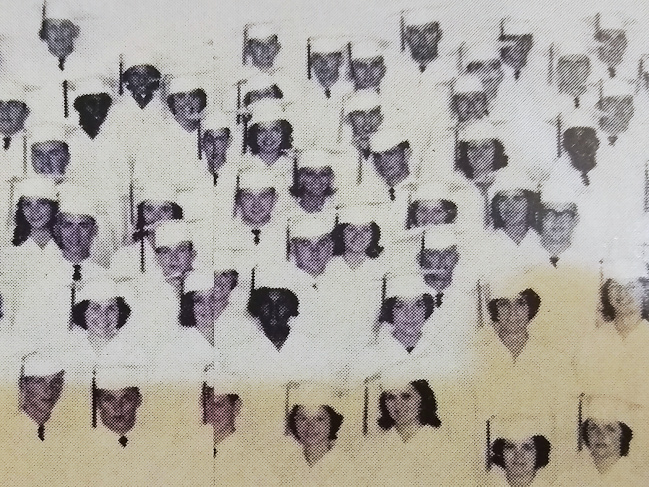School Activities Collection

Devptomg Half a Century to the Movement
Stay in the field, Stay in the field, Stay in the field, Until the war is ended. — Negro Spiritual
I would not have missed those Mass Meetings of the Savannah, Georgia Branch, National Association for the Advancement of Colored People, held over the past two years, for the life of me. Nor would I have missed the sit–ins, the wade–ins, the kneel–ins, the picket–line, the boycotts, the vote campaigns, the bus ride–ins and any of the other wonderful experiences gained while fighting for freedom in Chatham County. The memory of those inspiring experiences will stay with me for the rest of my life. Whenever people talk about the importance of Unity, I will ask them “How did you help with the fifteen–month boycott of Broughton Street and shopping center merchants and the more than one hundred Sunday afternoon mass meetings?” I have a warm affection for the people I have come to know through their regular attendance at the weekly mass meetings. They are the finest people in the world, and much of the good that has come would not have been made possible had it not been for these brave souls.
The course of events following the arrest of our Negro youth at downtown lunch counters, beginning with Wednesday afternoon, March 16, 1960, is a clear indication that the Savannah Negro was not satisfied with things as they were and many of them were willing to do their very best to bring Freedom and Justice to their home town. It was an unselfish, Christian adventure. We fought hard, although we knew that many who did nothing to help and others who openly opposed the fight for freedom would in the end benefit most from the fruits of our labors.
We came to the mass meetings each Sunday and heard strong, stirring speeches by the Rev. Curtis J. Jackson, Hosea L. Williams, Rev. P. A. Patterson, Rev. L. S. Stell, Jr., Curtis V. Cooper, Mrs. Mercedes Wright, Sidney A. Jones and many other, who admonished the Negro people to throw of the yolk of oppression and stand fast for freedom. We also witnessed passionate, and oftimes eloquent, addresses by youth “sit–in” leaders Willie Ludden, Charles Dailey, Ernest Robinson, Sherman Roberson, Jr., Leford Tobias, Jr., John “Plunk” McMillan, Benjamin V. Clark among others.
To look upon the youth and adults who, in the succeeding weeks, had bravely challenged the forces of segregation and demonstrated their faith in the rightness of the cause and to hear them relate their daring experiences, executed with extreme courage and great zeal, evoked prompt responses of complete cooperation of the Negro Community.
W. W. Law